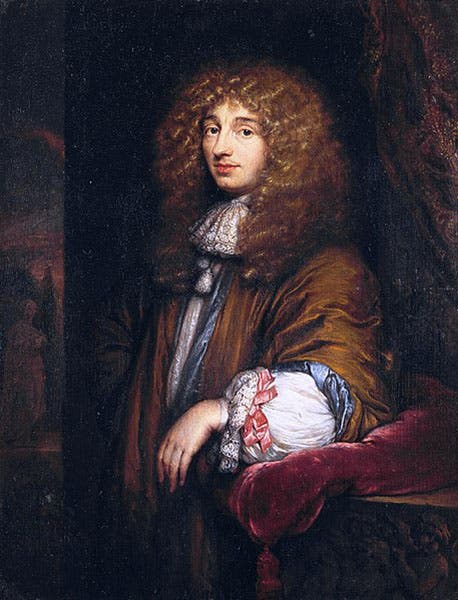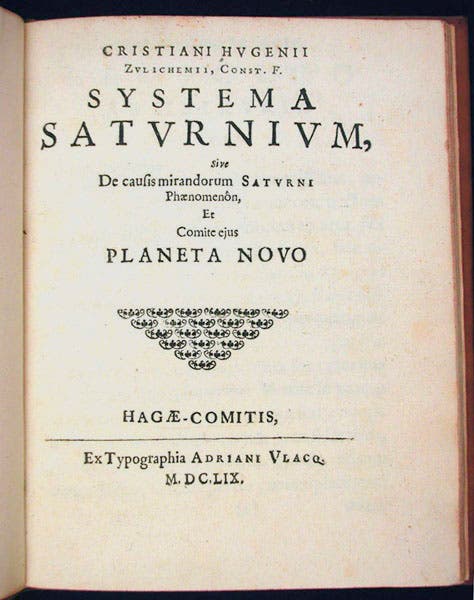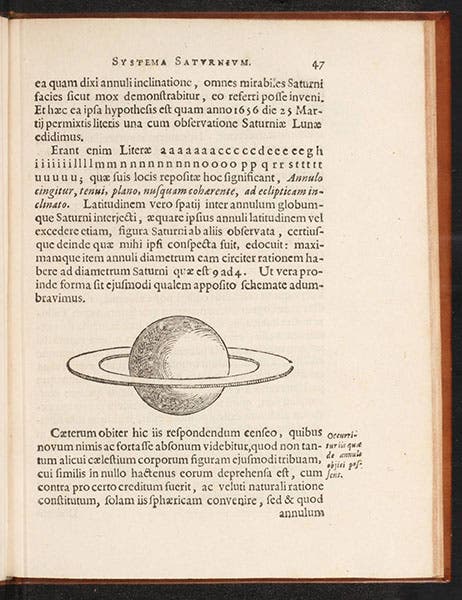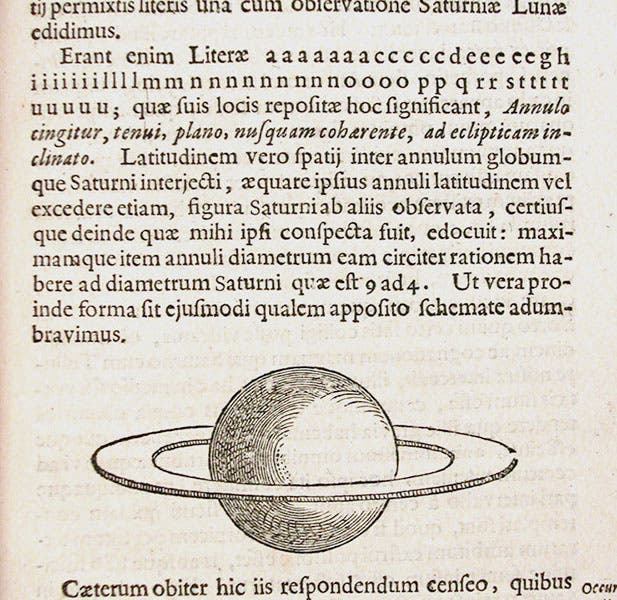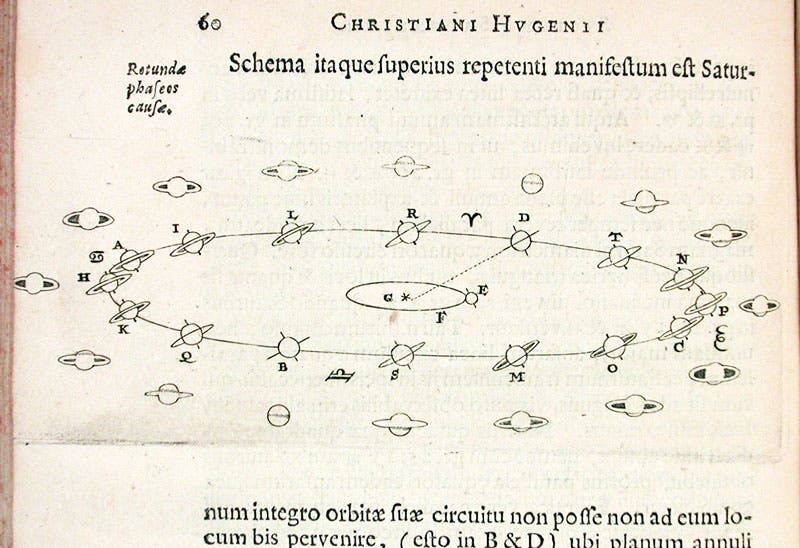Scientist of the Day - Christiaan Huygens
Christiaan Huygens, a Dutch astronomer, mathematical physicist, and inventor, was born Apr. 14, 1629. Four years ago, we wrote a post on Huygens in which we celebrated his invention of the pendulum clock, the first clock accurate enough for astronomical purposes. and possibly for helping solve the longitude problem. Today we focus on Huygens the astronomer, and his proposed solution to the problem of Saturn.
Saturn had mystified astronomers armed with telescopes ever since Galileo observed the planet in 1612. At first, Saturn revealed what looked like two small moons on either side. And then, the next time Galileo looked, it had no companions at all. Later observers noted what they termed ears on Saturn, and "anses" (handles). Huygens pictorially summarized previous observations of Saturn with a folding plate (first image) in his Systema saturnium (1659), a handsome copy of which we have in our Library (third image, just below).
Huygens first tackled the problem of Saturn in 1655, when he was only 26 years old, and he soon had a proposed solution – Saturn must be surrounded by a ring that is tilted with respect to the ecliptic, the apparent path of the Sun through the heavens (or the path of the Earth, if you are a Copernican, which Huygens was). Not yet ready to write a book about Saturn, but wanting to ensure his priority, he published his solution in the form of an anagram in a book by another author in 1656.
When his System of Saturn was published three years later, everything was explained. Huygens provided a drawing of a ringed Saturn (fourth image, above). Just above the woodcut, he republished his anagram, this time followed by the solution: Annulo cingitur, tenui, plano, nusquam cohaerente, ad eclipticam inclinato – “surrounded by a ring, thin, flat, nowhere touching, inclined to the ecliptic,” which we show in a detail just below.
Huygens also provided a diagram of Saturn with a tilted ring in various positions in its orbit around the Sun, and for each position he showed what Saturn at those points would look like from Earth (sixth image, just below). Saturn ran the gamut from ringless to ears to handles, just like in his first engraving. It was a brilliant solution.
It is often assumed that Huygens simply "saw" the ring with a better telescope than Galileo had available. Huygens did have a better telescope. But his discovery was an intellectual one, not an observational one – he figured it out in his head. We know this, because at the time of his discovery, in 1655-56, Saturn was at the point in its orbit where the ring is edge-on and thus invisible. Sometimes it just helps to be very, very clever.
The System of Saturn is a small, thin book - only 84 octavo pages – but it contains a surprising amount of new information. In addition to solving the problem of Saturn, Huygens announced the discovery (made in 1656) of a moon around Saturn (we now call it Titan). He also included several views of the belts of Jupiter and Mars (seventh image, just above), and even a striking engraving (eighth image, just below) of the great nebula of Orion – the first such image, if we don't count the woodcut of Giovanni Battista Hodierna, which showed only the central part of the nebula. Huygens’ treatise is one of the milestone books of the history of science. He was 30 years old when it was published.
Huygens was just getting started, and we will have to write a third post someday to discuss his discovery of the law of centrifugal force (which he published in his book on the pendulum clock in 1673), his work with air pumps at the Paris Academy of Sciences, and his posthumous book on the possibility of life on other planets.
When NASA sent a spacecraft to Saturn in 1997, they named it Cassini (after Giovanni Domenico Cassini, who discovered four more moons of Saturn in the 1670s as well as the gap in the ring), and when NASA decided to include a lander to parachute down to Titan, they called the lander Huygens. Huygens successfully descended to the frozen surface of Titan on Jan. 14, 2005. It is too bad it didn't carry a lock of Huygens' hair or some other memento of the great Dutchman. Or perhaps it did, and they aren't yet saying.
Dr. William B. Ashworth, Jr., Consultant for the History of Science, Linda Hall Library and Associate Professor emeritus, Department of History, University of Missouri-Kansas City. Comments or corrections are welcome; please direct to ashworthw@umkc.edu.


